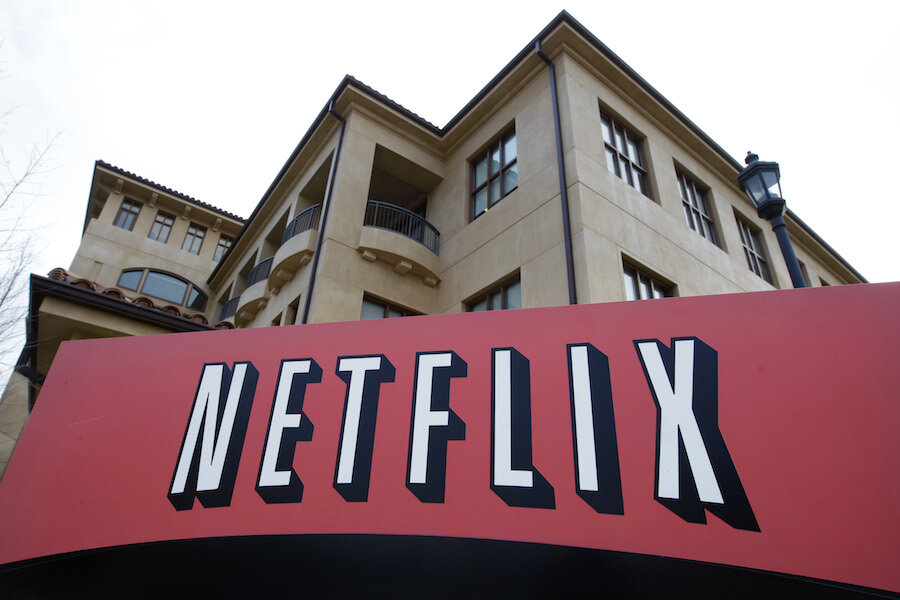Why 'family leave' policies like Netflix's are a sham
Loading...
Netflix just announced it’s offering paid leave to new mothers and fathers for the first year after the birth of adoption of a child. Other high-tech firms are close behind.
Some big law firms are also getting into the act. Orrick, Herrington & Sutcliffe is offering 22 paid weeks off for both male and female attorneys.
Even Wall Street is taking baby steps in the direction of family-friendly work. Goldman Sachs just doubled paid parental leave to four weeks.
All this should be welcome news. Millennials now constitute the largest segment of the American work force. Many are just forming families, so the new family-friendly policies seem ideally timed.
But before we celebrate the dawn of a new era, keep two basic truths in mind.
First, these new policies apply only to a tiny group considered “talent” – highly educated and in high demand.
They’re getting whatever perks firms can throw at them in order to recruit and keep them.
“Netflix’s continued success hinges on us competing for and keeping the most talented individuals in their field,” writes Tawni Cranz, Netflix’s chief talent officer.
That Neflix has a “chief talent officer” tells you a lot.
Netflix’s new policy doesn’t apply to all Netflix employees, by the way. Those in Netflix’s DVD division aren’t covered. They’re not “talent.”
They’re like the vast majority of American workers – considered easily replaceable.
Employers treat replaceable workers as costs to be cut, not as assets to be developed.
Replaceable workers almost never get paid family leave, they get a few paid sick days, and barely any vacation time.
If such replaceables are eligible for 12 weeks of family leave it’s only because the Family and Medical Leave Act of 1993 (which I am proud to have implemented when labor secretary under Bill Clinton) requires it.
But Family and Medical leave time doesn’t come with pay – which is why only 40 percent of eligible workers can afford to use it. And it doesn’t cover companies or franchisees with fewer than 50 employees.
Almost all other advanced nations provide three or four months paid leave – to fathers as well as mothers. Plus paid sick leave, generous vacation time, and limits on how many work hours employers can demand.
The second thing to know about the new family-friendly work policies is that relatively few talented millennials are taking advantage of them.
They can’t take the time.
One of my former Berkeley students who’s now at a tech firm across the Bay told me he’s working fifteen-hour days.
Another, who’s at a Washington law firm, said she’s on call 24-7. Emails often arrive past midnight, followed by text messages asking why the emails haven’t been answered.
These young men won’t take paternity leave and these young women won’t even get pregnant – because it looks bad.
Forget work-life balance. It’s work-as-life.
A recent New York Times story about Amazon reports that when young workers hit the wall from the unrelenting pace, they’re told to climb it.
Why do the talented millennials work so hard?
Partly because being promoted – getting more equity, running a division, making partner – promises such vast rewards. Vaster rewards than any generation before them has ever been offered.
Also, you’re either on the fast track or you’re on a dead-end road.
“I’ve got to show total dedication,” one of my former students explained. “It’s all or nothing.”
Which is why millennial men – who research shows have more egalitarian attitudes about family and gender roles than their predecessors – are nonetheless failing to live up to their values once they hit the treadmills.
It’s also why women on such high-powered career tracks are delaying or ultimately giving up on being mothers.
Or they’re giving up on the fast track.
After the collapse of 2000, the share of women working in high tech dropped sharply. And although tech recovered, female participation is still 6 percent lower than in 1998.
If they’re lucky, women on the fast track can afford to buy their way to motherhood. Marissa Mayer, appointed Yahoo’s CEO while six months pregnant, was back at her desk two weeks later.
It’s possible for such women to have it all – to “lean in” as Sheryl Sandberg puts it – only because they have enough resources for 24-hour childcare, car service for the kids and nannies, and all the extra help needed.
I’m delighted Netflix and other high-powered firms are offering family-friendly work.
But I take most of it with a grain of silicon. So should you.








